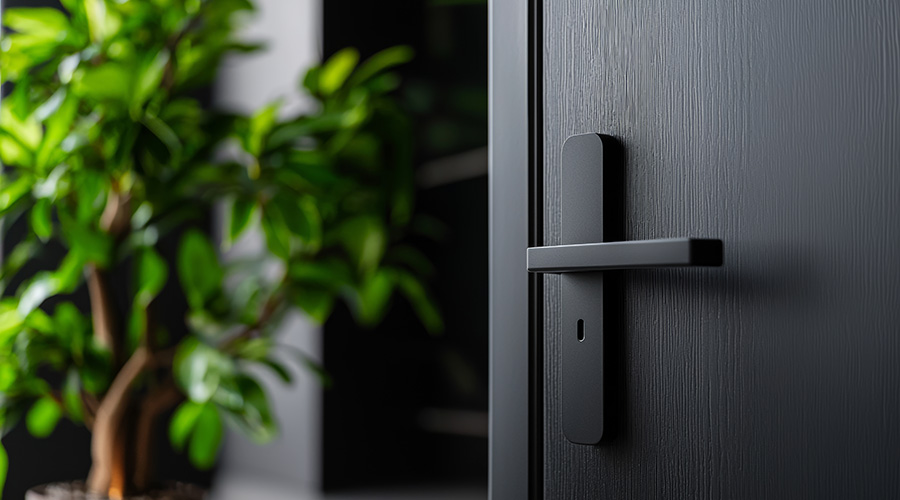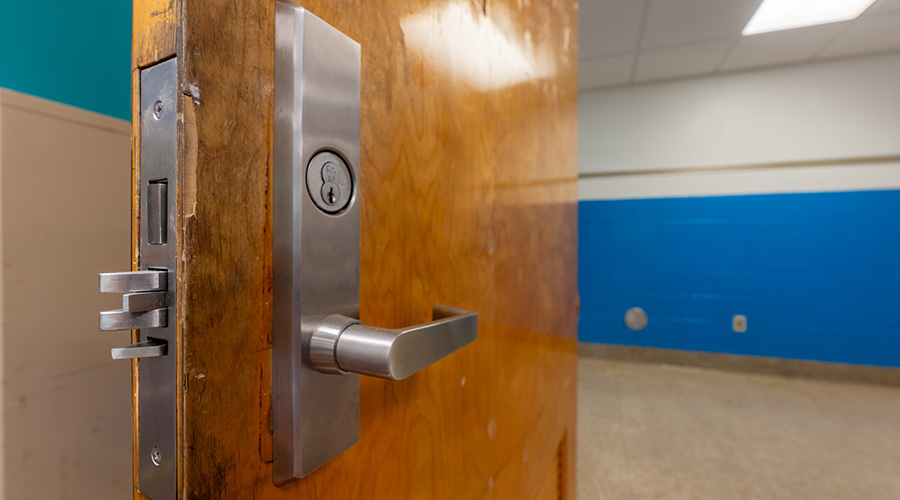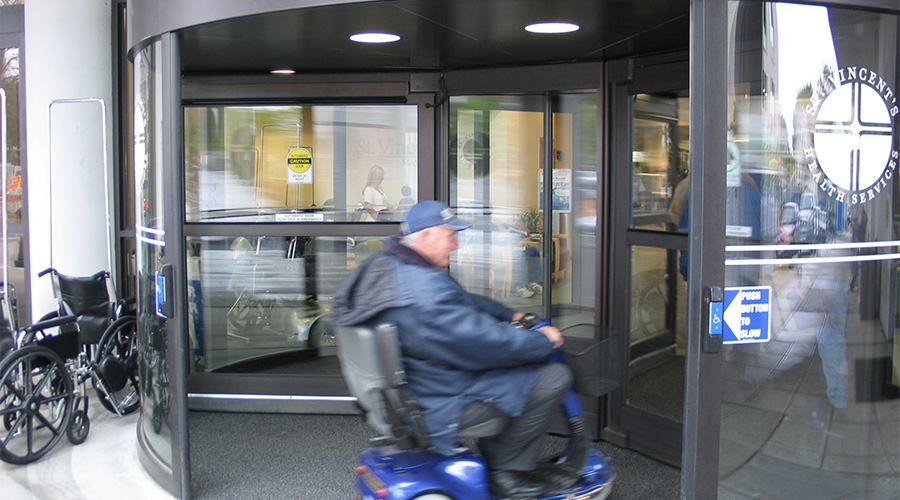The Security-Door Hardware Link
Windows are a fatal security weakness, avoid them at all cost!
Maintenance and engineering managers must consider a range of issues when specifying door hardware, including product and installation cost, access control, facility accessibility and durability. In recent years, however, facility security also has become a higher-priority issue in most types of facilities including health care, education, government and commercial office buildings.
Compounding this challenge is the advance of door-hardware technology related to security. To make the process easier, managers need to stay abreast of changing product technology, as well as a strategy they can use to match key door hardware components to facilities’ security needs.
Rethinking Threats
Door-hardware manufacturers have made key improvements to the security offered by door hardware in response to growing concerns about threats from both outside and within the facility. They now offer much more systems-oriented approaches.
In the past, the need for access control was the main driver for decisions about the best door hardware solution. But manufacturers now are seeing a growing demand for products and systems that deal with a variety of threats.
These threats include emergencies caused by fires or violent weather, but now also include terror and life-threatening attacks from outside a facility. Similar threats also arise from inside, such as employee and student violence in workplaces and schools. This range of threats creates the need for closer links among access control, identification and life safety.
Several key standard-setting organizations have moved in recent years to address changing facility security needs. One example is the National Fire Protection Association (NFPA) and its NFPA 101, Life Safety Code. This code governs the ways people move through a facility to safety in an emergency.
The challenge in such situations is to allow for free emergency egress while still protecting occupants. For example, exit doors cannot inhibit passage from the inside. At the same time, they also must deny access from the outside to protect from external threats.
The American National Standards Institute and the Builders Hardware Manufacturers Association (ANSI/BHMA) also have responded to growing security concerns by updating standards for certain types of door hardware. BHMA also is developing three new standards: A156.27, which covers power-operated revolving doors; A156.30, which covers high-security locks; and A156.31, which covers electrified strikes and actuators.
This third standard includes operational and finish tests as part of compliance. Operational tests include those for cycle, static strength, dynamic strength, and inductive kickback. Each standard also contains test-equipment requirements and test procedures used.
Door Hardware Technology
Manufacturers are rolling out many new magnetic switch-operated locks, motion sensors, and panic devices that alert a central location or offsite police station. These electronic devices are powered either by stand-alone batteries or low-voltage power supplies with battery backup to enable continued operation in the event of power failure.
Managers are specifying more high-security locks. Keys for high-security locks are made from blanks that not available from local locksmiths or at hardware stores, making unauthorized duplication more difficult.
Another new offering are 12- and 24-volt DC access-hardware power supplies, which eliminate the need for separate power supplies for locks and access controls. This unit also features battery backup and fire-emergency-release input.
In the standalone category, a new door check incorporates a self-contained proximity reader and a PIN pad. The check’s operators can use a master card or master PIN to enter or erase proximity cards, PIN codes and key-holder codes, and they can vary the configuration among proximity-card only, PNI only, or both card and PIN. This check can handle 400 users, and it offers a reading range of 6 inches, a tamper alarm, and two relay outputs.
Other check models have features similar to hard-wired models. These models offer keypad programming or computer control, and they feature a 1,600-event history, a battery life of 150,000 cycles, low-battery alarm, nine master-group levels, 90-user groups, and 1,800 preprogrammed events.
Programming and event history capability tracks 200 locksets and transfers information over a secure, infrared data-transmission device. This unit is ADA compliant and stands up to all weather conditions.
Complementing Door Hardware
Today’s door hardware and accessories address not only access control but also identification capability. This includes technology that supports facial recognition, 10-fingerprint identification, visitor and asset management, closed-circuit-video, digital recording, intrusion detection for perimeter and interior areas, and PC-controlled systems with capability to store hundreds of identities and thousands of events.
Other recent products added to the catalogs of some door and hardware vendors include nurse-call systems, metal detectors, video-container-inspection devices, video vehicle inspection, and a variety of gates, turnstiles, bollards and barricades. Many of these items were not even considered a few years ago as a part of the security needs and have only recently been added to provide a turnkey security service.
The final layer of products used along with door hardware are services such as specifications preparation, risk analysis, site surveys, support for design and installation, integration with enterprise level systems, reliability assessments, cost estimates, and maintenance and troubleshooting services.
Making it All Work
Rapid changes in facility security needs and door hardware technology are likely to mean that key components require more frequent follow-up inspection and maintenance. As sophisticated door hardware continues to expand in institutional and commercial facilities, managers will need to review their strategies.
This step involves reviews by the architect, the engineer or an outside consultant on door hardware to update the system as regulations, standards and building occupancy change. Regulation revisions occur occasionally based on hearings held periodically to address public concerns about the regulatory impact.
The outcomes of these hearings can affect the maintenance practices that departments have established. If building occupancy or use changes, the number of people entering and leaving will change, as well. But simply relocating exhibits, furniture, or window and door treatments might nullify some part of the security system.
Aside from the affect on security products such as motion detectors, these changes cause different traffic patterns and changes in wear and tear on the doors and door hardware. Managers will need to modify frequencies for inspection and adjustment to keep pace with building occupants’ activity changes.
A final key change managers must consider is the way that the need for additional and updated door hardware affect the annual budgetary decisions. Security has become a major safety issue, and security costs are an important investment with major safety and health implications.
Related Topics:











